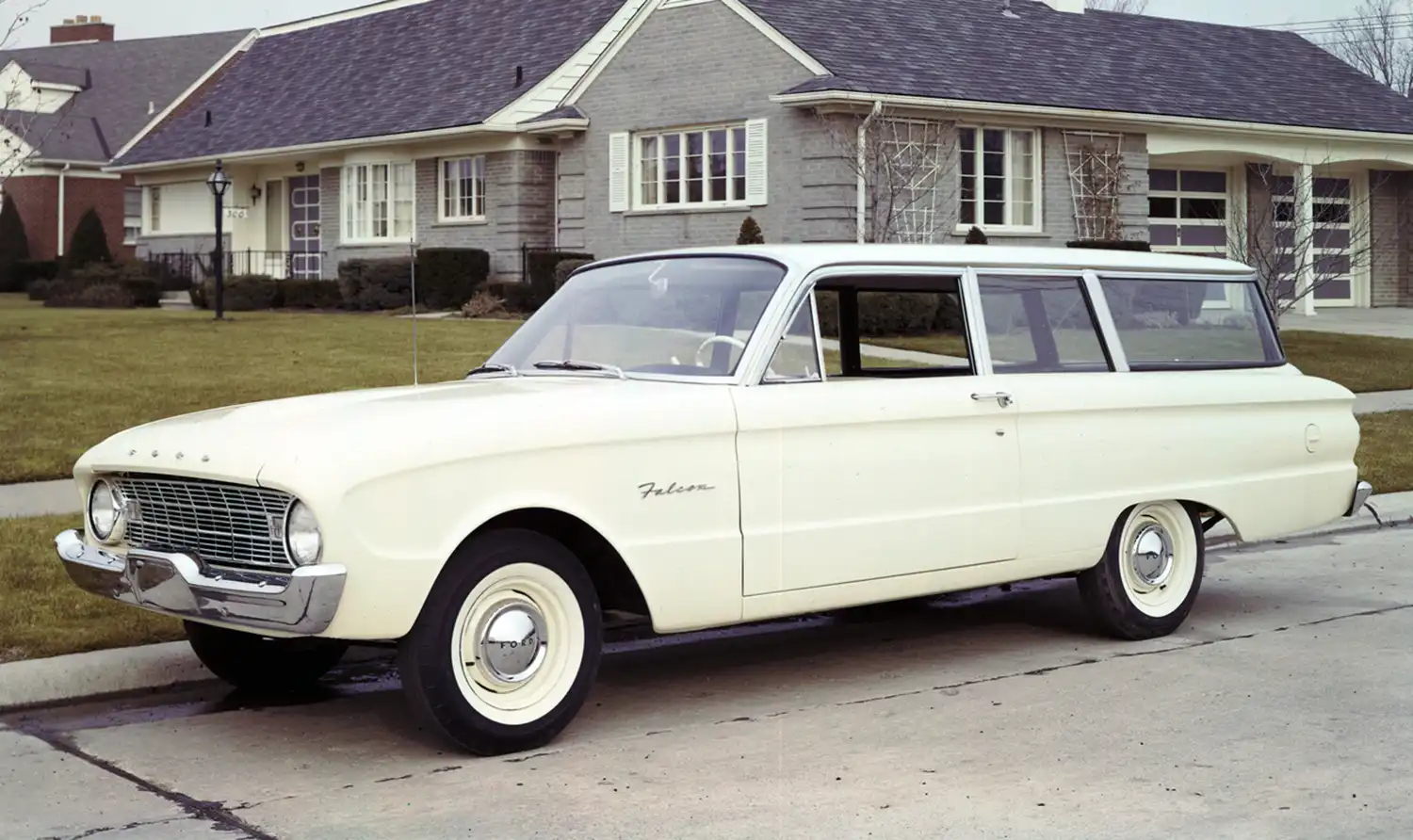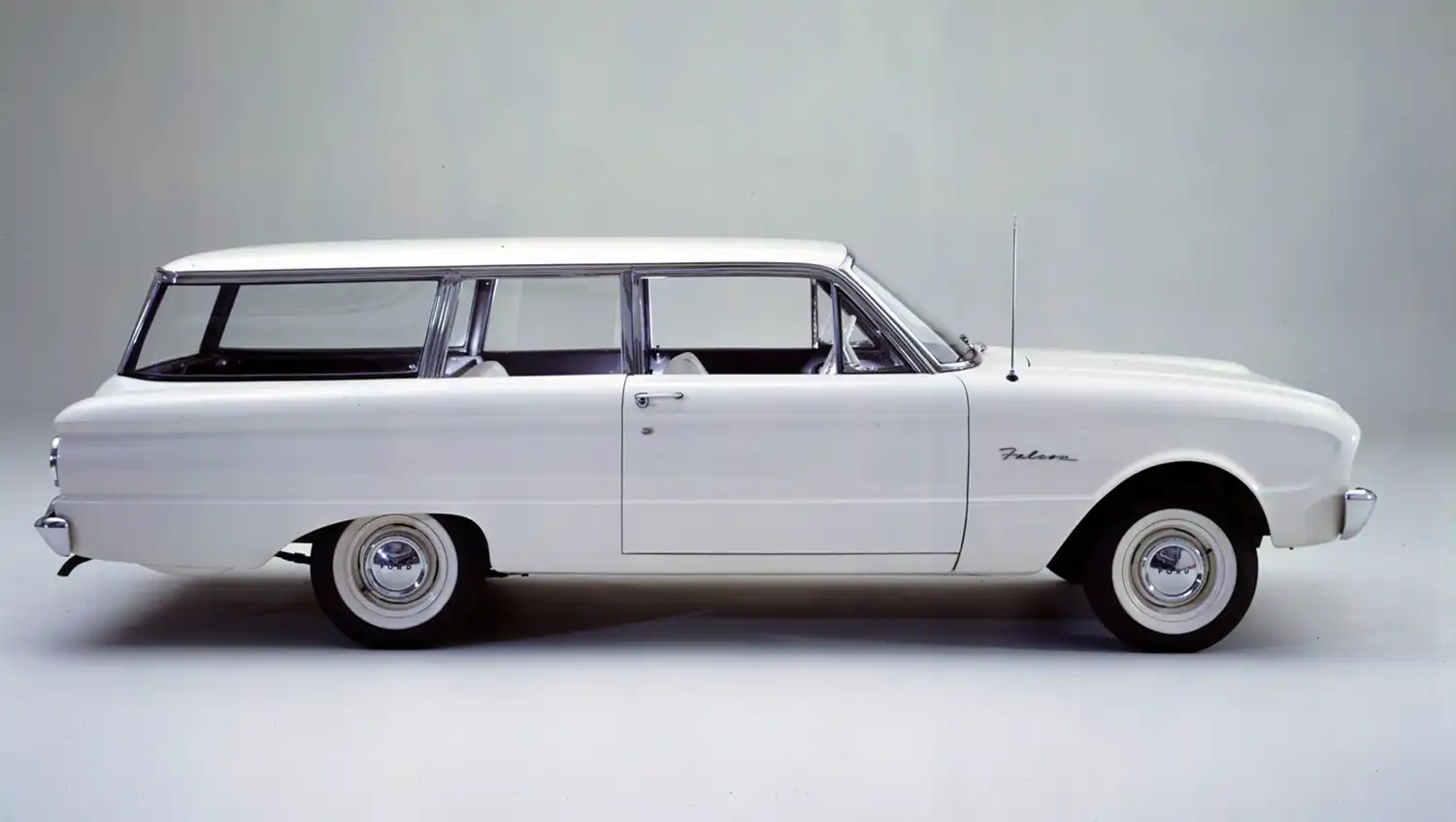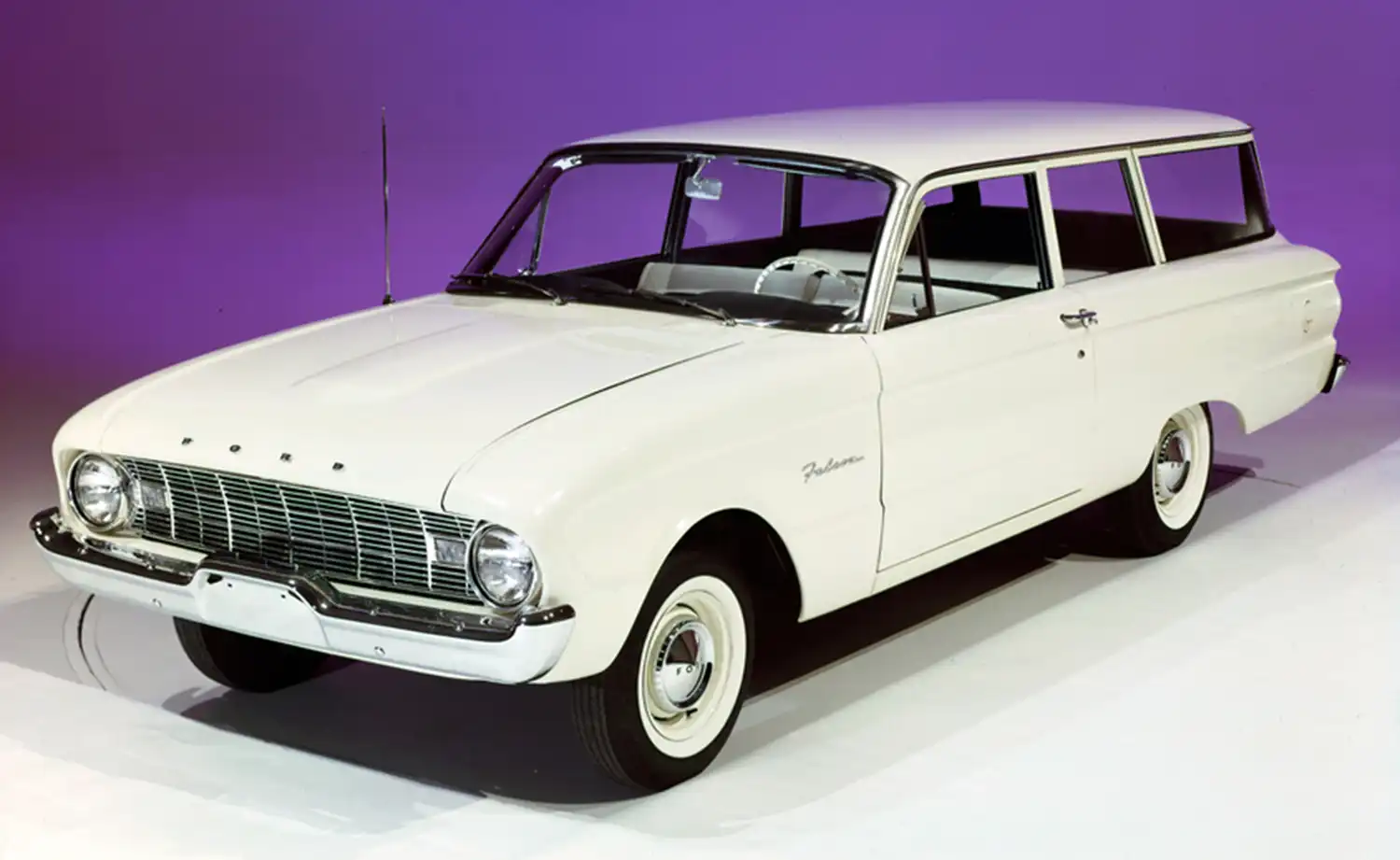
The Ford Falcon, introduced in 1960, marked Ford’s entry into the burgeoning compact car market in the United States. Faced with increasing competition from smaller, more fuel-efficient imports, Ford aimed to offer an American-made alternative that was both economical and practical. The Falcon was a success, offering a simple yet stylish design, a comfortable ride, and a range of body styles to suit various needs. Among these was the station wagon variant, the 1960 Ford Falcon station wagon, which quickly became a popular choice for families seeking affordable and versatile transportation. It embodied the practicality and value that defined the early Falcon, offering ample cargo space and seating in a compact and easy-to-manage package.
Functional and Unassuming Design: The 1960 Ford Falcon station wagon adopted a straightforward and functional design, prioritizing practicality over flamboyant styling. Its clean lines, unadorned surfaces, and efficient use of space were hallmarks of its design philosophy. The front end featured a simple horizontal grille flanked by round headlights, a common design element of early 1960s Fords. The wagon body style extended the roofline rearward, creating a spacious cargo area accessible via a liftgate. The overall design was honest and utilitarian, reflecting the Falcon’s mission as an affordable and practical vehicle for everyday use. While not overtly stylish, its clean and simple aesthetic had a certain understated appeal, and its focus on functionality made it a compelling choice for budget-conscious buyers needing extra cargo capacity.
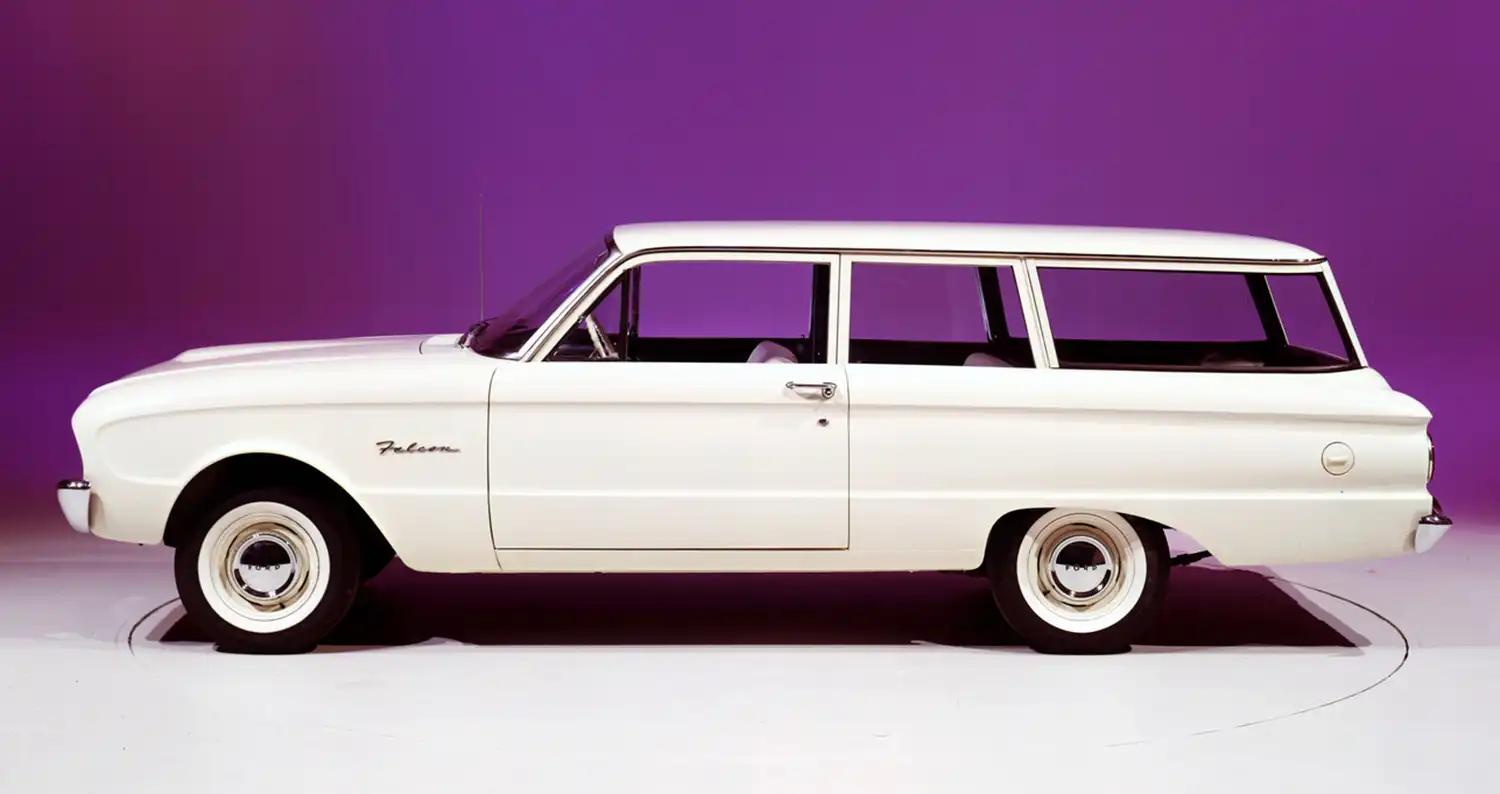
Spacious and Practical Interior: The interior of the 1960 Ford Falcon station wagon was designed with practicality and passenger comfort in mind. The cabin offered seating for up to six occupants, with a rear bench seat that could be folded down to expand the already generous cargo area. The dashboard was simple and functional, with easy-to-read gauges and controls. Durable materials were used throughout the interior, reflecting the Falcon’s focus on value and longevity. The expansive cargo area in the wagon made it ideal for families, tradespeople, and anyone needing to haul groceries, luggage, or work equipment. The large rear liftgate provided easy access to the cargo space, further enhancing its practicality. While not luxurious, the interior was comfortable and well-suited for its intended purpose as a reliable and versatile family vehicle.
Economical Engine Options: The 1960 Ford Falcon station wagon was offered with a choice of economical inline six-cylinder engines, emphasizing fuel efficiency and reliability. Efficient and Dependable Performance: The standard engine was a 144 cubic inch “Mileage Maker” inline six, producing around 90 horsepower. An optional, slightly larger 170 cubic inch inline six was also available, offering a modest increase in power. These engines were known for their dependability and fuel economy, aligning with the Falcon’s positioning as an affordable and practical car. Transmission options typically included a standard three-speed manual or an optional two-speed Fordomatic automatic transmission. The performance was adequate for everyday driving and hauling moderate loads, with the emphasis being on efficiency and smooth operation rather than high-performance figures.
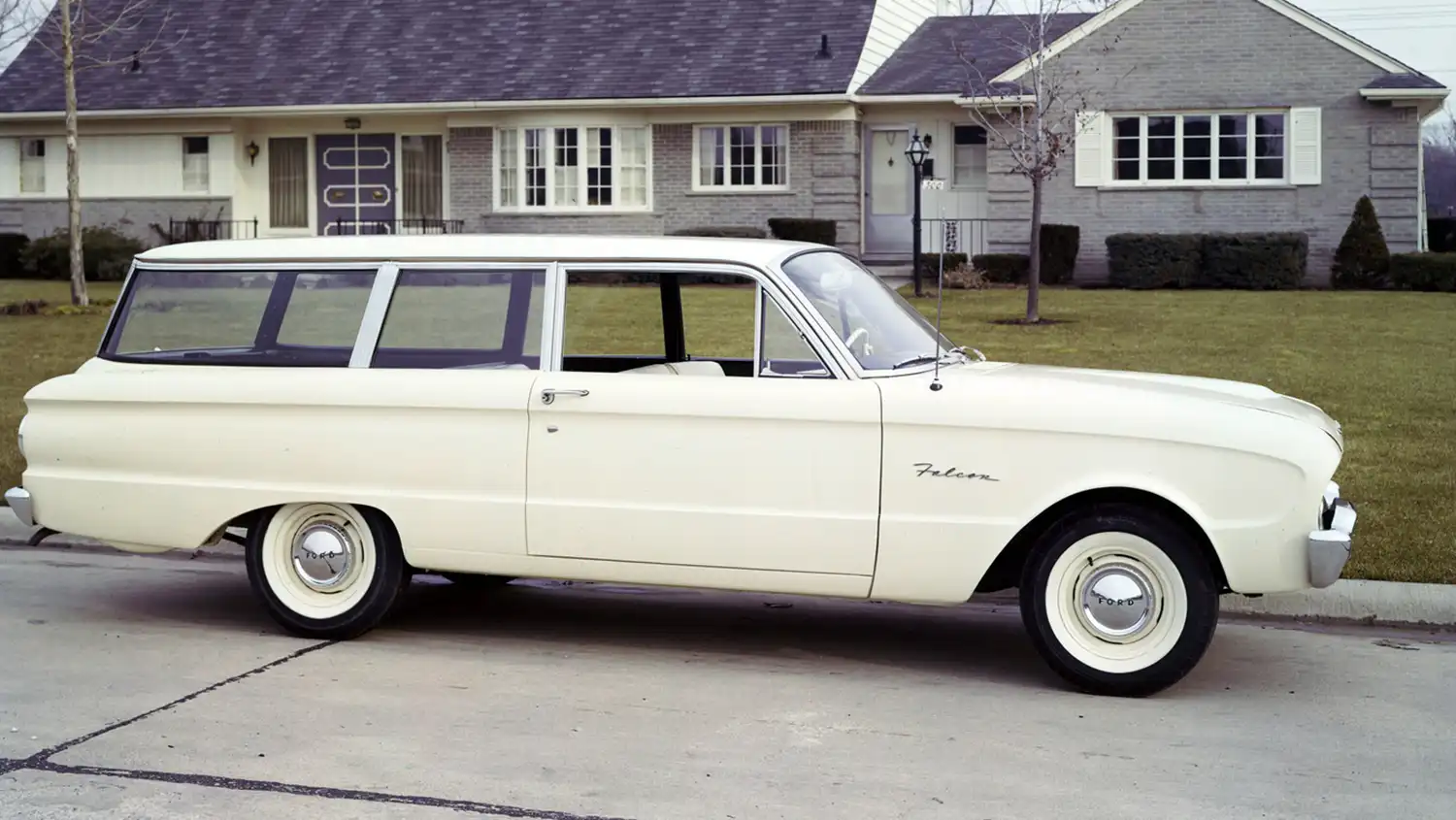
Comfortable and Easy Handling: The 1960 Ford Falcon station wagon was engineered to provide a comfortable ride and easy handling, making it a pleasant car for daily driving. Its relatively compact size and lightweight construction contributed to its nimble feel. The suspension system was designed to absorb road imperfections, providing a smooth ride for passengers. Manual steering was standard, but power steering was available as an option for easier maneuverability, especially when the car was loaded or during parking. The braking system was adequate for the car’s size and weight. Overall, the driving experience was characterized by its ease of use and comfortable ride, making it a practical and user-friendly vehicle for a wide range of drivers.
A Symbol of Practicality: The 1960 Ford Falcon station wagon became an instant success, embodying the growing demand for practical and affordable transportation in the American market. Its combination of fuel efficiency, ample cargo space, and comfortable seating made it a popular choice for families and budget-conscious buyers. The Falcon wagon played a significant role in establishing the compact car segment in the US and paved the way for future generations of Ford’s successful wagon models. Its straightforward design and focus on practicality resonated with a large segment of the population, solidifying its place as an automotive icon of its era, representing reliable and versatile transportation for the everyday American.
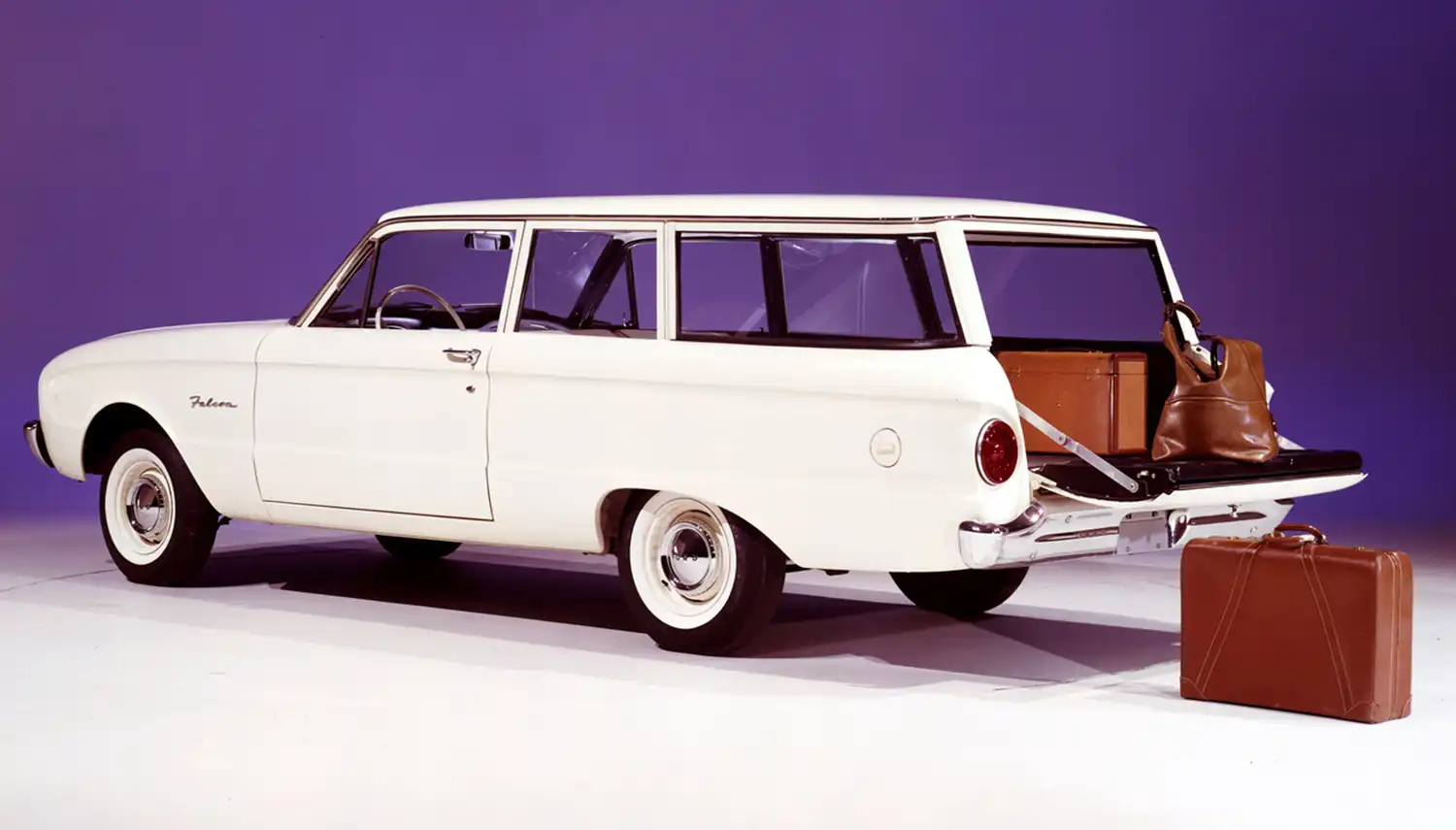
Summary:
- Ford’s entry into the compact car market in 1960.
- Offered a practical and functional station wagon body style.
- Spacious interior with foldable rear seats for ample cargo.
- Powered by economical inline six-cylinder engines.
- Provided a comfortable ride and easy handling.
- Became a popular choice for families seeking affordable transportation.
- Played a key role in establishing the compact car segment in the US.
Disclaimer: Information provided is based on general automotive knowledge and historical data regarding the 1960 Ford Falcon station wagon. Specific engine options, horsepower ratings, and available features may have varied. Consult original specifications and documentation for precise details.
Source: Ford Heritage Vault
AI Assistance: Gemini
